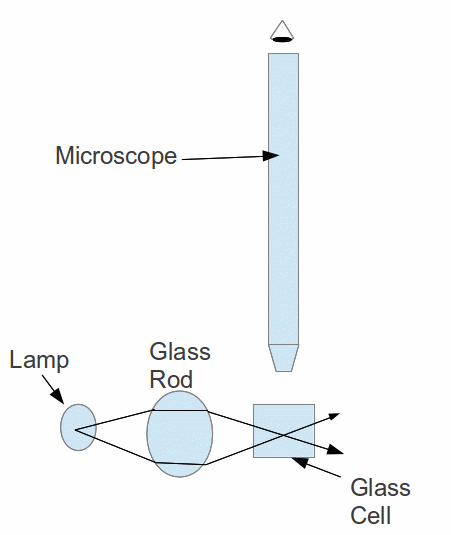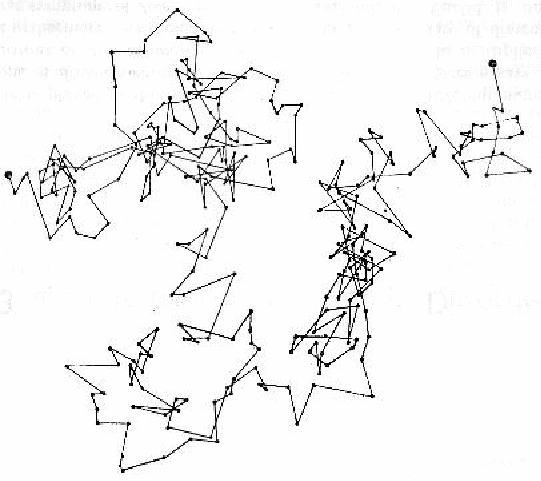If a small glass cell contains some pollen grains suspended in water and is illuminated under a microscope, the pollen grains appear to execute a highly irregular 'random walk' motion. This is called 'Brownian motion'. The apparatus for observing the motion is illustrated below.

If we follow the path traced by a single grain of pollen, we may observe something like th path below.

The same effect can be observed for smoke particles suspended in air. The explanation in any canse is that the poolen/smoke particle is bombarded on all sides by water/air molecules respectively. Sometimes it may happen that more collisions occur on one side of the pollen grain/smoke particle. The pollen grain/smoke particle may be given a nudge causing it to change direction suddenly. It will then travel in a straight line until the next time there is an imbalance in collisions on one side over another, when the direction of the pollen grain/smoke particle changes again.
